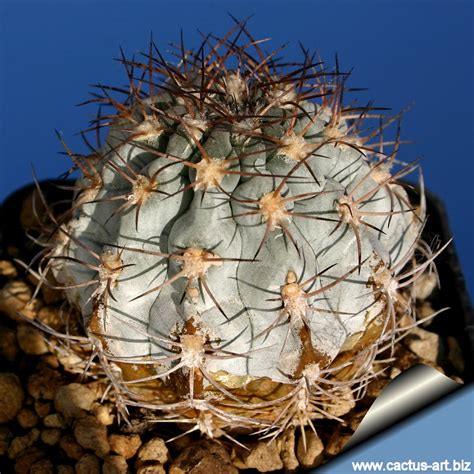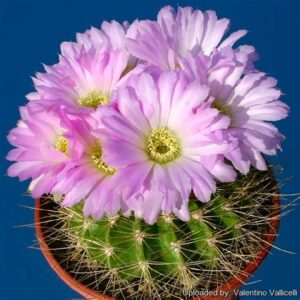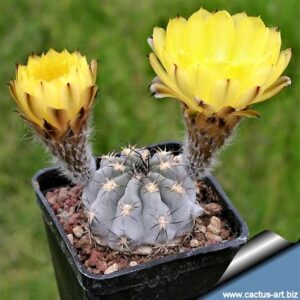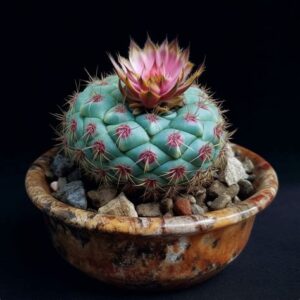The Acanthocalycium glaucum rubrifolium is a mesmerizing and captivating specimen within the vast world of cacti, particularly intriguing for its vibrant coloration and distinct morphological characteristics. This species represents a remarkable visual spectacle that often leaves enthusiasts and casual observers alike in awe.
With its enchanting red-tinted foliage and compelling spination, the Acanthocalycium glaucum rubrifolium is not merely a plant; it is a statement piece in any plant collection. Its aesthetic appeal and unique botanical features invite closer examination and exploration. This article delves into the various aspects of this remarkable cactus, from its physical attributes to its cultivation needs, ensuring that plant aficionados gain a rewarding understanding of this exceptional species.
Exploring the Physical Characteristics
The Acanthocalycium glaucum rubrifolium is distinguished by a plethora of unique features that set it apart from its counterparts. At first glance, its lush, rounded form is captivating. The plump, cylindrical body of the cactus can reach impressive dimensions, often measuring several centimeters in diameter, and can grow up to approximately 30 centimeters in height. This robust growth habit gives the cactus a robust presence, making it a focal point in succulent arrangements or desert-themed gardens.
The most striking characteristic of the rubrifolium variety lies in its coloration. The plant exhibits a remarkable reddish hue that appears almost flamboyant, especially when displayed against a backdrop of verdant greens or muted earth tones. This coloration is not static; rather, it fluctuates depending on fluctuating environmental conditions such as sunlight exposure, temperature, and hydration levels. The interplay of light and shade on the waxy surface of its skin enhances its allure, inviting admiration from all who encounter it.
Accompanying the vibrant color are the cluster of stout spines adorning its surface. These spines, often varying in color from golden yellow to dark brown, add an element of drama and intrigue. The contrast between the soft, colored skin and the sharp, emergent spination creates a visual paradox that is both intimidating and beautiful. This lethal defense mechanism serves a purpose in the harsh ecosystems from which this species originates, protecting it from herbivores while simultaneously offering a uniquely aesthetic appeal.
Habitat and Distribution Insights
The Acanthocalycium glaucum rubrifolium is native to the arid regions of South America, particularly found in Argentina, where it thrives amidst rocky terrains and dry environments. Understanding its natural habitat can provide valuable insights into its cultivation and care requirements. The surrounding ecological conditions are critical, as they dictate the species’ adaptations to withstand prolonged periods of drought and harsh sunlight.
In its native ecosystem, the rubrifolium variety typically grows in well-draining soils, often composed of sand and gravel. This attribute must be replicated by enthusiasts in horticultural settings to ensure optimal health. The plant’s natural tendency to develop a broad root system enables it to anchor itself firmly while seeking moisture and nutrients from the substrate.
Fascinatingly, the climate in which the Acanthocalycium glaucum thrives features significant temperature fluctuations: it basks in the heat of the day, only to be met with chilling nights. This dichotomy not only shapes the plant’s growth but also its overall resilience. Understanding these climatic variations is essential for replicating a suitable environment for cultivation, allowing for the full manifestation of the cactus’ notable characteristics.
Artificial Cultivation: An Intricate Dance with Nature
While understanding the Acanthocalycium glaucum rubrifolium’s natural habitat provides a basis for care, actual cultivation can present an intriguing challenge. For those looking to grow this stunning cactus, several key factors must be considered to mimic its native conditions successfully.
Firstly, soil composition plays a pivotal role in the plant’s health. A well-draining cactus mix, augmented with gravel or perlite, will provide the necessary aeration and drainage essential for healthy root development. Thus, avoiding waterlogged conditions is paramount; excessive moisture can lead to root rot, a common affliction among cactus enthusiasts.
In terms of sunlight requirements, this cactus flourishes in full sunlight, necessitating at least six hours of direct sunlight daily. However, newcomers should be cautious; a sudden overexposure to intense light can cause sunburn, manifesting as discoloration on its vibrant skin. Gradual acclimatization to bright conditions is recommended to avoid such pitfalls.
The specific watering schedule can be equally as nuanced. During the growing season, which typically spans from spring to summer, adequate hydration is crucial; one should water thoroughly and allow the soil to dry out completely between waterings. Conversely, during dormancy in the colder months, hydration should be infrequent, as the plant conserves energy and moisture during this time.
Encouraging Healthy Growth: Nutritional Needs and Fertilizing Techniques
The nutritional requirements of Acanthocalycium glaucum rubrifolium should not be overlooked. In its growing season, utilizing a diluted, balanced fertilizer every month can enhance its growth potential. Opt for a cactus-specific formula, known for its ability to support the unique physiological needs of these desert-dwelling plants. Over-fertilization, however, can lead to detrimental effects, including weak growth and increased susceptibility to disease.
Ongoing pruning and care are also integral to maintaining the health and aesthetics of the cactus. Regular assessment will allow for the removal of any dead or damaged spines, preserving the vigor of the plant and its striking appearance. Careful attention to its environment, along with periodic checks for pests and diseases, will promote longevity and robustness in this captivating species.
The Allure of Hybridization and Aesthetic Appeal
Of particular note is the increasing popularity of hybrid varieties stemming from the Acanthocalycium glaucum. Enthusiasts often engage in experiments to create hybrids with other succulent species, yielding astonishing results characterized by remarkable variations in color and shape. These hybrids maintain the distinctive features of their parent species while introducing novel attributes, creating more visually arresting specimens for collectors.
Incorporating Acanthocalycium glaucum rubrifolium into a garden or indoor display can elevate its aesthetic appeal, forming a vivid tableau when juxtaposed with other succulents and cacti. Its bewitching appearance captures the essence of desert beauty while offering an exciting focal point in a collection. Its singular presence enlivens plant arrangements, making it an exceptionally desirable specimen.
Conclusion: The Captivating World of Acanthocalycium Glaucum Rubrifolium
The Acanthocalycium glaucum rubrifolium stands as a testament to the beauty and diversity of the cactus family. Its striking colors, robust form, and intriguing growth requirements create both challenges and rewards for cultivators. Recognizing the delicate relationship between the plant and its environment is crucial for successful cultivation, ultimately enhancing one’s appreciation for these captivating organisms.
As interest in cacti continues to grow, the Acanthocalycium glaucum rubrifolium remains an enduring symbol of nature’s elaborate artistry. For those seeking to add a touch of elegance to their succulent collection, this remarkable species embodies the perfect blend of beauty, resilience, and intrigue.





Leave a Comment